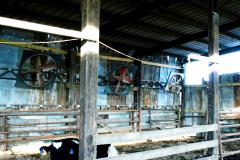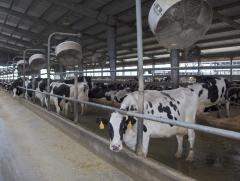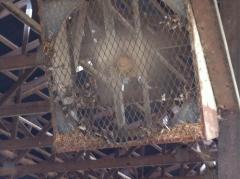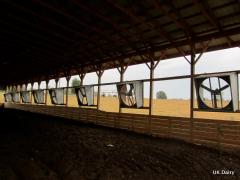Are You Getting the Most Out of Your Fans?
Are You Getting the Most Out of Your Fans?
With the summer heat and humidity, the signs of heat stress on dairy cows are very evident. Cow temperatures, respiration rates, and heart rates increase with heat stress and is a major issue for dairy cows, particularly in hot, humid climates. It’s easy to forget that cows begin experiencing heat stress when the temperature humidity index is 68. Heat stressed cows produce less milk, are less feed efficient, less likely to conceive, more likely to become sick, and more likely to become lame. Helping alleviate some heat stress can lessen its impact. Building open barns that maximize natural ventilation is the first step to managing heat stress. But, generally, we need to supplement natural ventilation with mechanical ventilation and water. Unfortunately, fans are often used without knowing how to maximize their effectiveness. Here are a few common mistakes seen in dairy cattle facilities that reduce fan effectiveness. Many of these situations can be remedied with little to no capital investment.
1. Fans are placed with inlet against a wall (Picture 1) or with fan direction against that natural air. For maximum airflow, fan inlets should be set so that natural air flows into the inlet. This improves fan performance and can increase air flow.
Picture 1. Fan inlet placed against a wall.

2. Fans are placed at the wrong angle or too far apart (Picture 2). Fans should be placed so that air from one fan is aimed at the bottom of the next fan. The angle is between 15-20 degrees. This minimizes opportunities for dead space or lack of air movement. Distance between fans is generally 10 times the diameter of the fan. For example, a 36-inch fan would cover 30 feet and a 48-inch fan would cover 40 feet. In the figure below, the fans are pointed toward the ground, leaving large open areas without any supplemental air.
Picture 2. Fans placed at the wrong angle.

3. Fans aren’t clean (Picture 3). Dirty fans do not put out as much air and energy efficiency is reduced considerably. Fan blades and housing should be cleaned periodically to avoid situations like identified in the picture below. Fan belts should be replaced periodically.
Picture 3. Dirty fans

4. Fans are placed too far apart across a row of fans. In Picture 4, additional fans could be added to eliminate the dead space between fans. These types of fans are generally designed to blow forward, not necessarily to the side. During hotter temperatures, cows may be found lying in rows directly in front of the fans, showing that they prefer the areas with more airflow.
Picture 4. Fans are place too far apart.

5. Not enough fans over freestalls (Picture 5). A row of fans should be present for each row of freestalls. In the picture below, only one row of fans is in place. Adding a second row of fans would increase air flow to the cows resting in the freestalls.
Picture 5. Not enough fans over freestalls.

6. Fans are not on. It may sound simple, but this is often a major opportunity. Many people don’t turn on fans until they feel hot. However, the cow’s thermal neutral zone is much lower than ours. Thus, they experience heat stress at much lower temperatures than humans do. Fans should be turned on (manually or automatically) somewhere between 65 to 70° F.
Author: Jeffrey Bewley, Ph.D.
